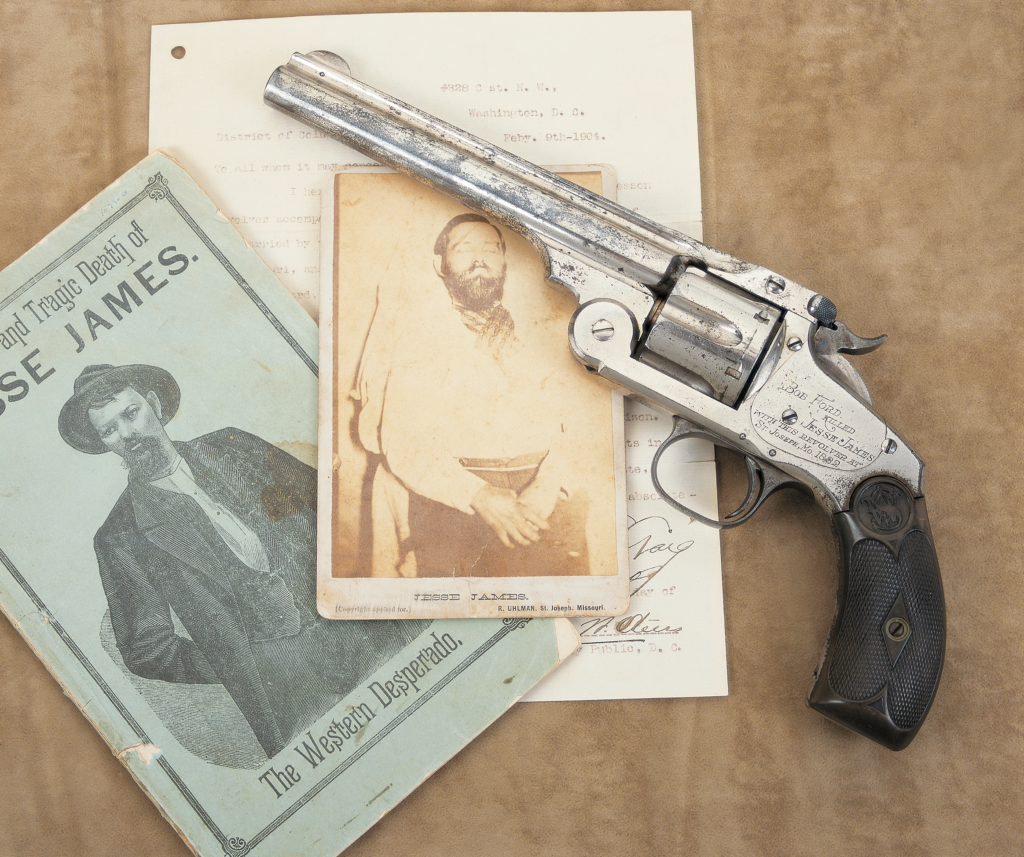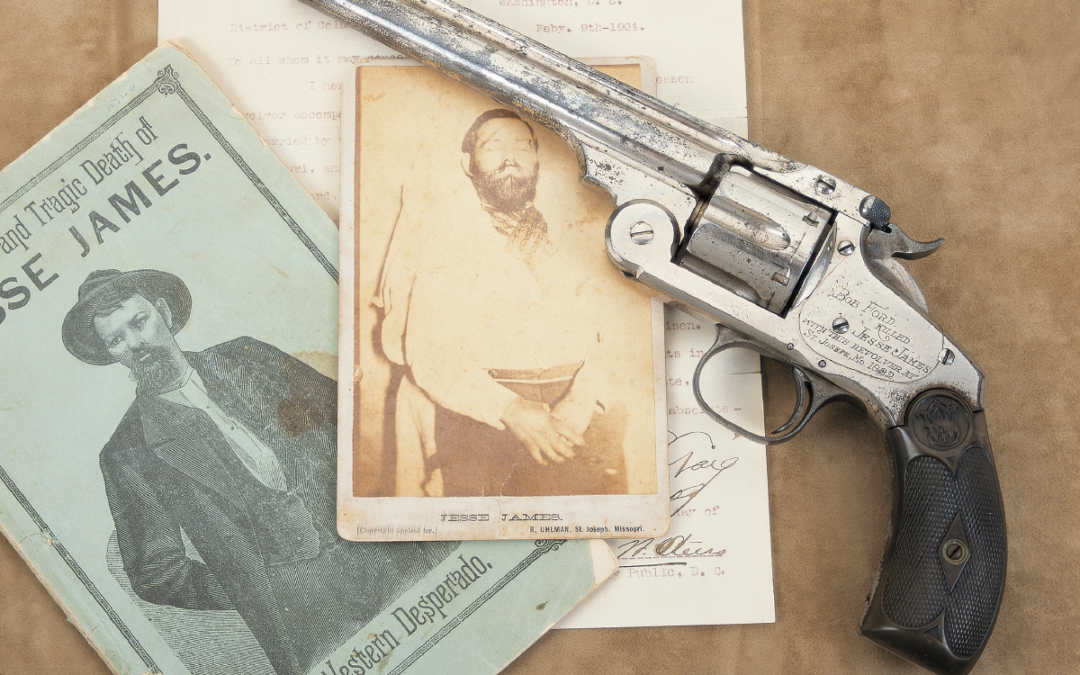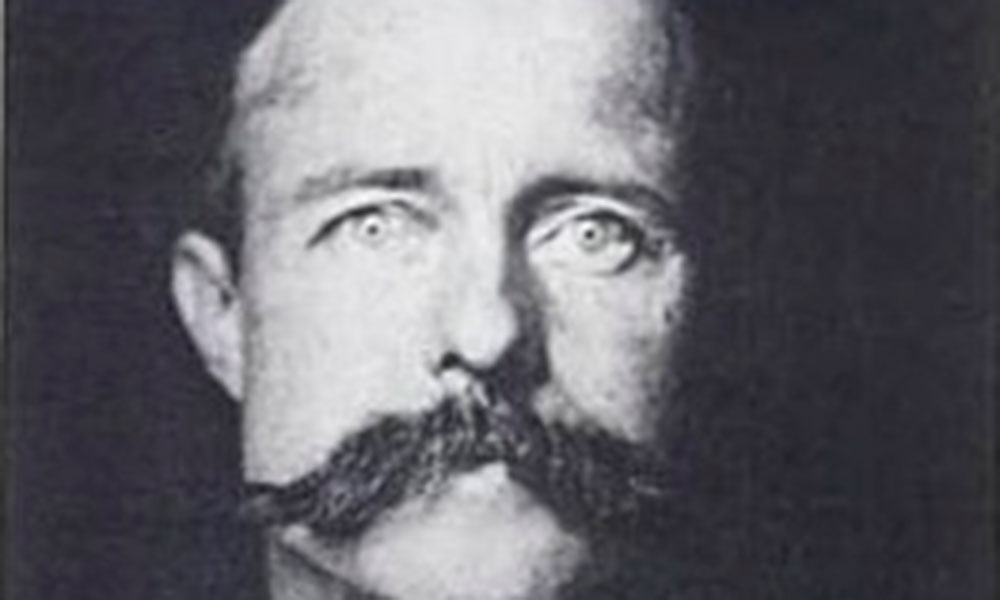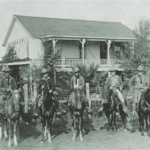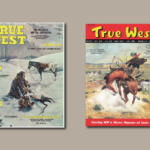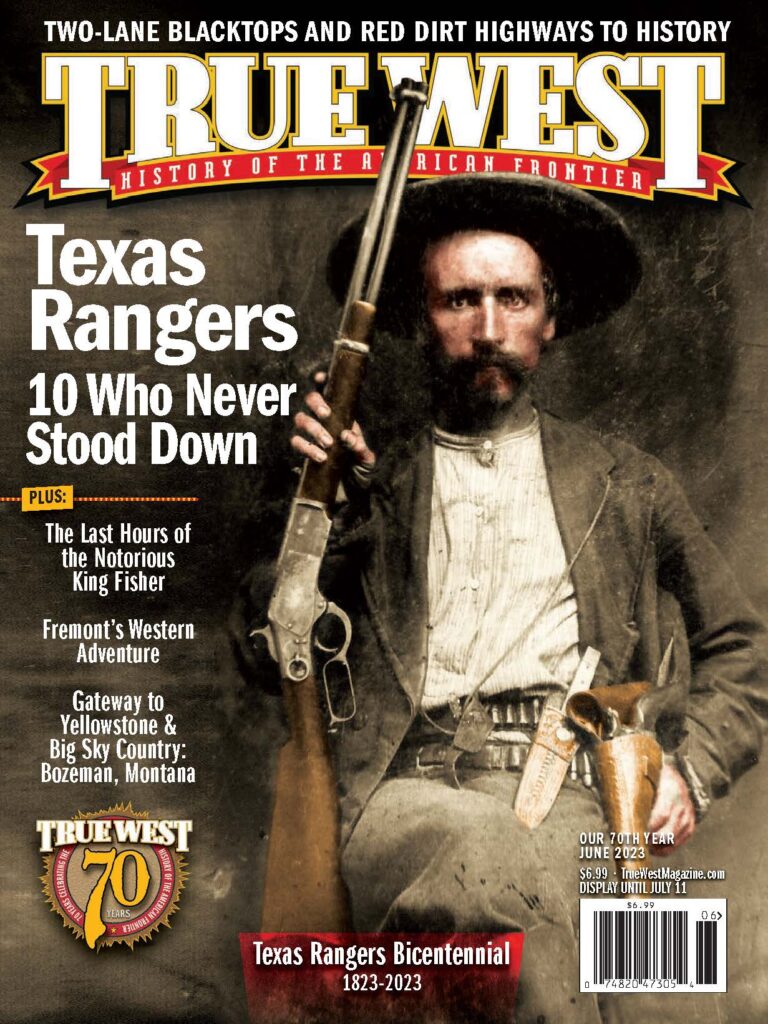Our readers remind us of the variables and vagaries of historic truths, “well-established” facts, headlines and historical photographs.
Did Bob Ford shoot Jesse James with a Colt .45 or a Smith & Wesson .44?
In the February/March 2023 issue, Mark Lee Gardner wrote a column titled “TheSmoking Gun: Where is Colt #50432?”
Gardner’s research led to his straight-up conclusion, based on these facts:
- The Colts: The St. Joseph Western News’ edition on the day of the shooting stated that Bob’s weapons consisted of “one forty-five caliber Colt’s and one forty-one caliber of the same make, but double action.” The St. Joseph Daily Gazette of April 4 reported that Bob used the .45 Colt to kill Jesse.
- The Jailer: Former City Marshal Enos Craig turned over the brothers’ property on May 2, 1883, The receipt from Craig, published in the St. Joseph Herald, listed one Colt .45 and one Colt .41, the same weapons identified as belonging to Bob.
- The Affidavit: Bob Ford signed an affidavit in front of Jackson County Justice of the Peace J.C. Ranson that he used the Colt .45 to kill Jesse James. Ford’s sworn statement was published in the Kansas City Times of May 5, 1882, which added that the murder weapon was then on display at C. Blitz’s “Famous Loan” office. Bob soon paid off the loan and retrieved his gun, for he used it on stage in the following months when reenacting with his brother their dastardly—or heroic—act.
- The Photo: The striking photograph of a seated Bob Ford (right) taken by St. Joseph photographer Alex Lozo on April 6 shows Ford holding a Single Action Army Colt, which appears to be nickel-plated.
End of story, right?
Well, according to retired professional forensic investigator Coy Prather of Montalba, Texas, Bob Ford shot Jesse James with a Smith & Wesson .44, and here’s why—Prather makes the following points:
- Pearl-handled Colt: In a picture taken on April 6th, Bob is holding a silver-plated Colt revolver. The picture is famous as murderer and death gun. But the pistol is obviously not “pearl-handled” (below, left).
- The Jailer: Corydon Craig served as jailer to Bob and Charley Ford while they awaited the grand jury and were held for the murder of Jesse. Craig was kind to the Fords, bringing them good food and cigarettes, and for this kindness, Bob presented him with the gun he used to kill Jesse James. At the time, Bob had no idea the gun would be valuable. Craig is not noted anywhere in his lifetime as a liar. He offered the gun to the Postmaster General of the United States. He turned it down, but his son, an attorney, purchased the gun. Craig signed a sworn statement of provenance. If Bob had used a Colt .45 or Colt .41 double-action revolver, and if he owned two guns, why would he need a gun gifted from Jesse? If Bob was wearing two guns, how did this slight young man conceal them from Jesse?
- The Affidavit: The article of the affidavit returning the “guns belonging to Bob” back to him on May 5th, in the Kansas City Times, even though reportedly signed by a Justice of the Peace is of no consequence. This is also hearsay; the article is of little value unless the original legal document is uncovered. Even then, the signature of Bob Ford would have to be examined. Bob had a known letter written with his signed name, and it could be examined by a forensic handwriting expert. Other than that, it is an advertisement by a loan agency—an agency which possibly bought the Colt for Bob.
- The Colt Serial #: The best evidence we must examine is the serial number listed in the article. Did anyone think of contacting Colt Firearms to see if this serial number existed? I did. It was used on 26 different firearms, one an 1879 Colt Peacemaker. Colt charges for a more extensive search, but someone willing to put out the bucks might find out who ordered the revolver. Nickel-plated guns were often specially ordered. It also might reveal where the gun was sold, the area of the nation. Did the Colt 1879 Peacemaker sell in the Kansas City area? Where is the provenance? Without all this, the only firearm with provenance is a Smith & Wesson No. 3 new model, caliber .44, serial number #3766.
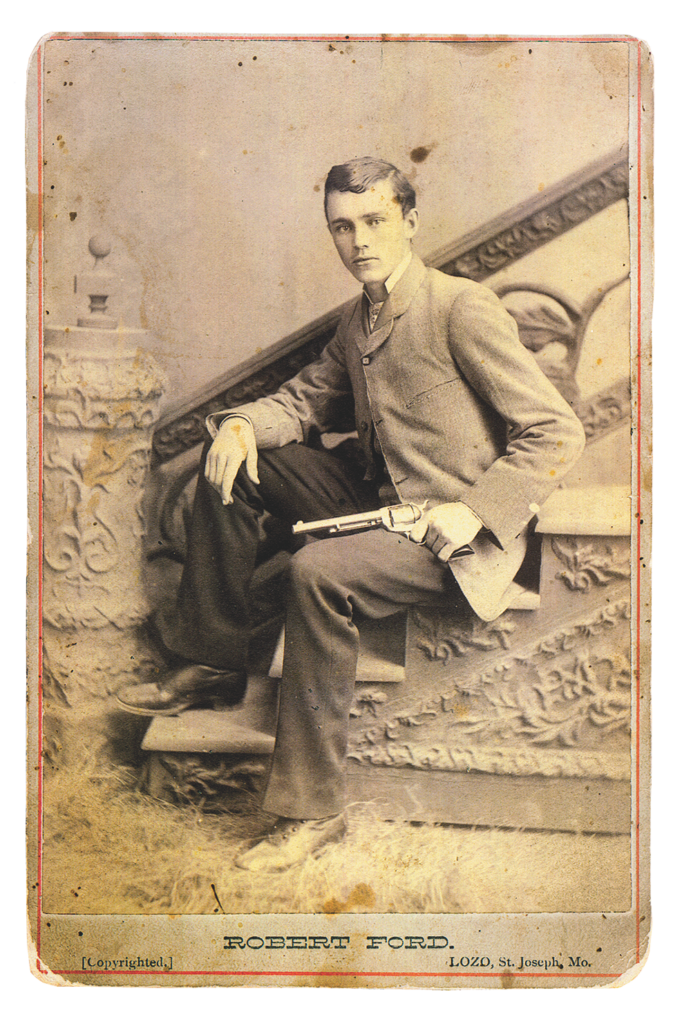
True West’s esteemed Firearms Editor Phil Spangenberger read Mark Lee Gardner’s article and Coy Prather’s rebuttal; here is his response:
What if the bullet that killed the notorious desperado still exists?
Was the bullet that killed Jesse James saved, and if so, does it still exist? Is it residing in some museum or in a pathology collection somewhere? If the April 6, 1882, edition of the St. Joseph Western News can be believed, an autopsy performed on Jesse James’ body found the bullet in his skull “under the cranium behind the left ear.” When discovered and examined, it was described as flattened-out with tiny splinters of bone in the lead.
To this shooter’s mind, the description “flattened-out” does not necessarily mean it was totally flattened like a river stone. Most likely only the projectile’s head was flattened, yet much of the remainder of the bullet probably still retained its basic shape, as is so often seen in projectiles recovered from game animals and other similar-type targets. If this death-dealing bullet could be found—and authenticated—it would allow one to measure the diameter of its base, thus quite possibly identifying the caliber. Once the bore size of the firearm used to assassinate the outlaw is identified, I’d say the debate would be over. Here’s why. A commercial .45 Colt load as would have been used in Ford’s Peacemaker Colt would have a lead bullet that measures .451-inch, while a similarly produced .44 S&W Russian (the most common caliber for the S&W New Model) or a .44-40 bullet (somewhat common in that model) would read .429-inch and .427-inch respectively.
Clinically speaking, fired from such a close range, it is unlikely that Robert Ford’s bullet would completely deform in such material as Jesse James’ skull bone and brain matter. Admittedly, it’s a long shot, but if the retrieved bullet could only be found, the difference in the diameter of the base would certainly tell the tale and end the argument!
But this is a big if. Regardless, it’s certainly something to think about, and perhaps begin a search for a chunk of lead, and start a totally new argument over the validity of that piece of metal… After all, there’s been one heckuva lot of money invested already on the testimonials and other written accounts of which six-gun was the killing weapon…just sayin’.
—Phil Spangenberger
